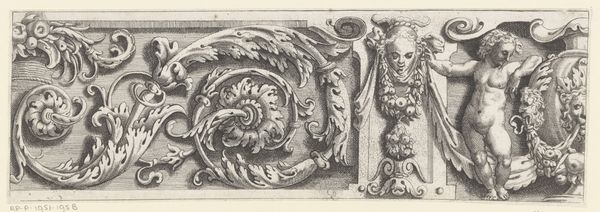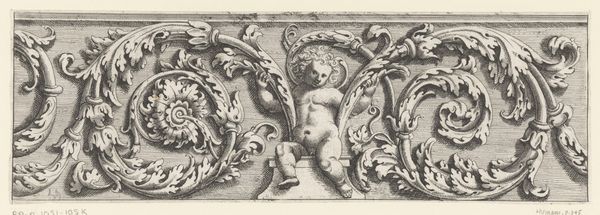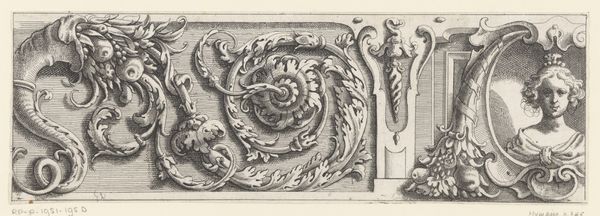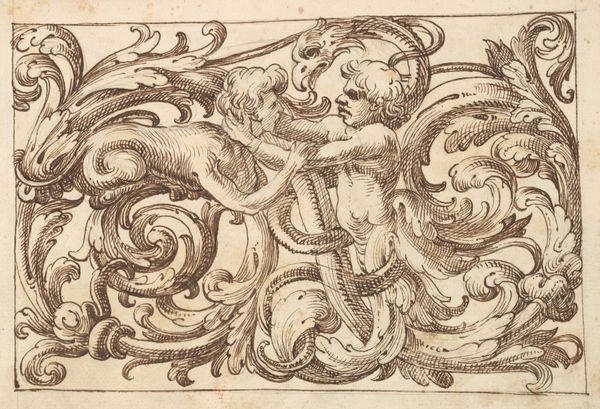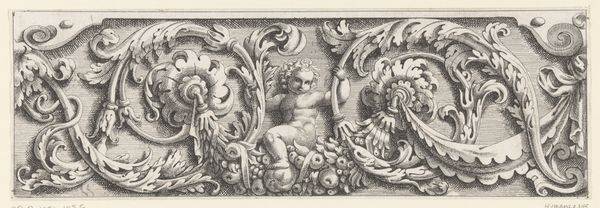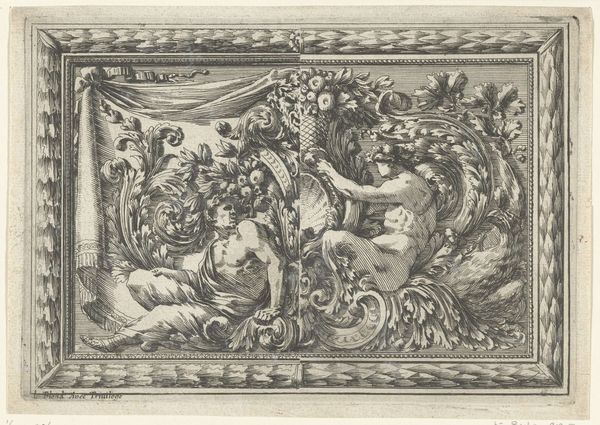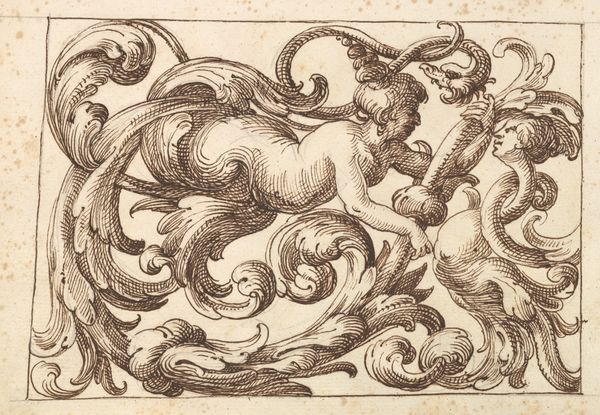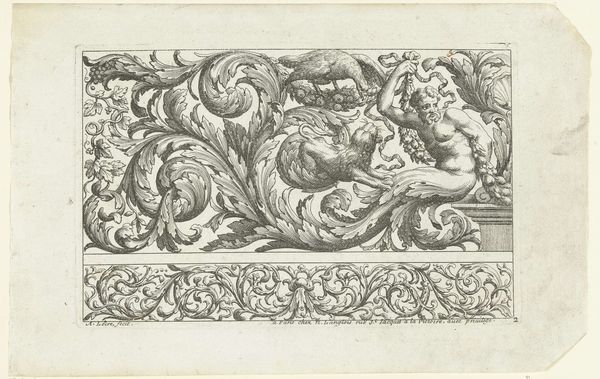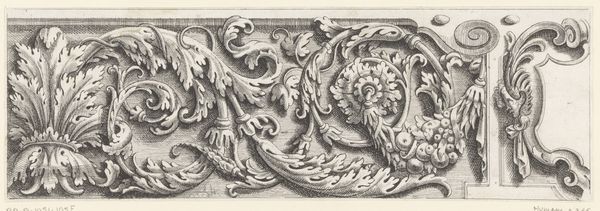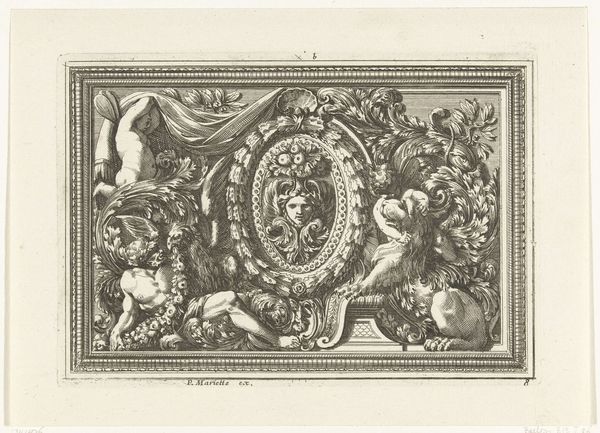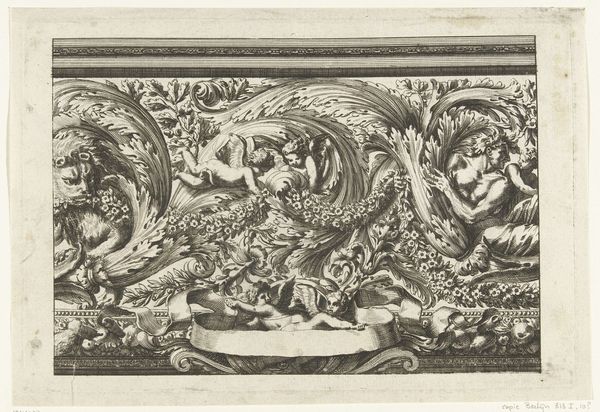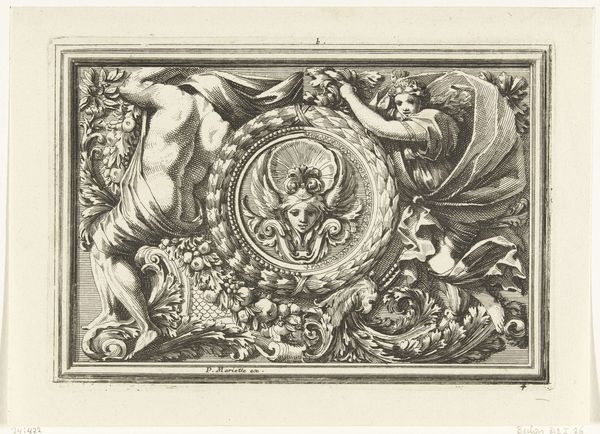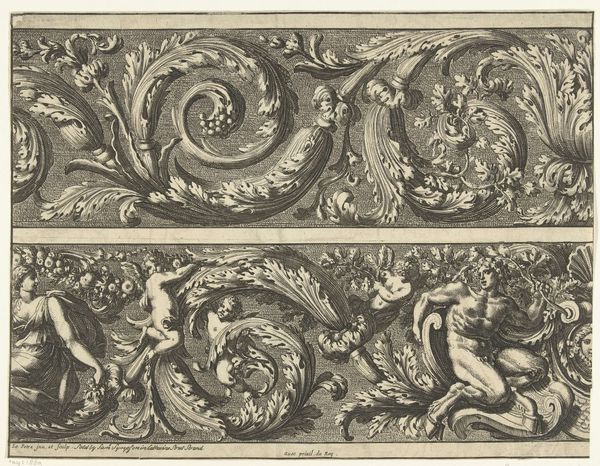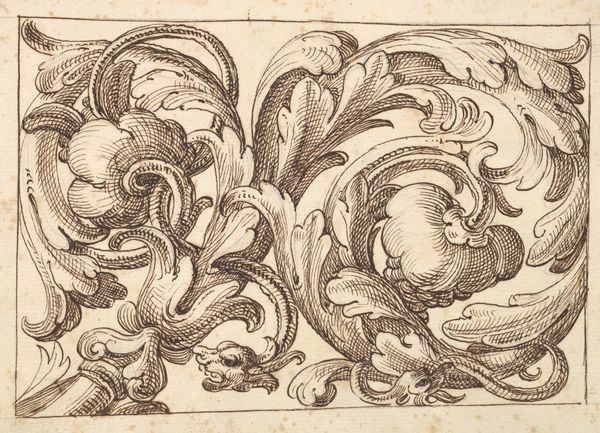
print, ink, engraving
#
baroque
#
pen drawing
# print
#
figuration
#
ink line art
#
ink
#
fruit
#
line
#
engraving
Dimensions: height 92 mm, width 281 mm
Copyright: Rijks Museum: Open Domain
Editor: This is "Putto in ranken van acanthusbladeren en fruit," or "Putto in tendrils of acanthus leaves and fruit," a print dating back to 1640. The artist is anonymous. It looks like an engraving, so ink on paper, and it’s currently held at the Rijksmuseum. The level of detail is amazing. I'm struck by the almost excessive ornamentation. What's your interpretation of this piece, seen through a historical lens? Curator: The intense detail points to a society obsessed with display and wealth. Consider where something like this might be displayed. In a book of patterns, perhaps, meant for emulation? It speaks to the rising merchant class of the Dutch Golden Age, a group eager to mimic aristocratic styles but also to showcase their own prosperity and sophistication through patronage of the arts and elaborate home decor. The image suggests abundance, a popular and persuasive propaganda. Editor: Propaganda? So you think it has a message beyond pure decoration? Curator: Absolutely. These weren't neutral images. The imagery of a healthy child nestled amidst lush fruit, especially acanthus leaves, suggests prosperity and fertility – both social and literal. This image would communicate not only status, but also a family's aspirations to ensure the continuation of their prosperity and social position. What do you notice about the putto's placement? Editor: It’s completely engulfed by foliage and fruit, almost struggling, maybe. It's interesting how the idealization of childhood intertwines with the symbols of wealth. I never considered how deeply intertwined art could be with social climbing. Curator: And how art could reinforce particular social and cultural values. Think about how such prints would influence aesthetic preferences and what kind of lifestyle would be deemed aspirational. Editor: It makes me rethink how I perceive art from this era. I used to focus solely on aesthetics, but I now understand how much social commentary and ideology is embedded within these ornate details.
Comments
No comments
Be the first to comment and join the conversation on the ultimate creative platform.
